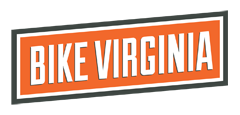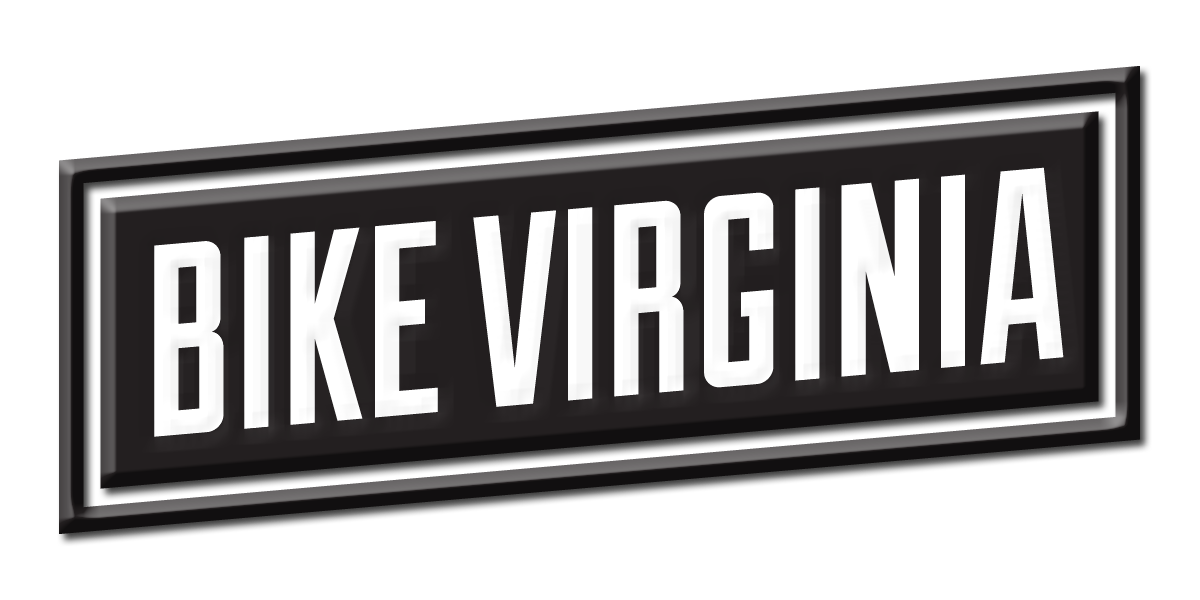Christine Turpin, RD, LDN, CSCS writes about nutrition for Bike Va. Good fuel can be the missing link for having great bike rides. See what she has to say about the importance about pre-ride fuel, hydration, and post ride recovery.
Food for Fuel: Nutrition to Energize Your Bike Ride
Fueling on the bike is not a one size fits all package and what works best for you may not be ideal for your riding partner! Training and conditioning are two components of the performance puzzle with nutrition often being the missing link. When a cyclist is properly fueled, there is potential for high performance. For a successful ride focus on (1) pre-ride fuel, (2) hydration, and (2) recovery foods! Take time during your training to experiment with different types of nutrition and find out which fuel works best for you!
(1) Pre-ride Fuel: Energize Your Ride
Carbohydrates (CHO) are the primary energy source for muscles. Since the body can only store a limited amount, there is a constant need to replenish those stores. Everyone’s body will be depleted of CHO stores and fluids after a full night’s rest, which is why cyclists must make CHO intake a priority. CHO are used to fuel muscles, build up reserves, recover and prepare for the next ride. A high CHO intake is necessary for ultimate performance.
CHO needs of a cyclist vary. As training increases, energy intake should increase. For those cyclists who like to number crunch, recommended daily carbohydrate intake for general training is 5-7 g CHO/kg of body weight and 7-10 g CHO/ kg body weight for endurance cyclists (Dunford, Marie). A rule of thumb is to consume 1.0 grams of CHO per kilogram of body weight each hour prior to the event (Dunford, Marie).
If you are like me and would rather not calculate figures, eat a balance of fruits, vegetables and whole grains for fuel before ride! My typical pre-ride meal consists of a bowl of old fashion oatmeal with a diced banana, sprinkled with a handful of raisins and a splash of milk.
CHO intake is also recommended during the ride as well. Can you drive a car cross country on one tank of gas? No, you will make frequent stops along the way to fill the tank. Apply the same concept to your ride to power through the course. When your primary source of gas (carbohydrates) is not available, you will run out of gas. At this time your body may dip into protein stores and break down muscle for fuel as well. Fuel up with carbohydrates!
There are plenty of tasty treats at fueling stations along the Bike Virginia course. However it’s important to practice fueling both pre-ride and during the ride! General hourly recommendations for CHO intake on the ride are 30-60 grams of CHO (food or drink) to fuel muscles, prevent low blood sugar and provide pedal power for climbs.
What does 30-60 grams of CHO look like?
- Banana + ½ peanut butter and jelly sandwich
- ¾ cup yogurt + ½ cup grapes + handful of pretzels
- 2 Fig newton cookies + 20- fluid ounces of G2 (Gatorade)
- Baked sweet potato + handful almonds
- Granola bar + peeled slices of orange
It’s easy to overindulge and our eyes are often bigger than our stomachs. Remember you will be fueling again in another hour or so, do not stuff yourself.
Good sources of CHO include whole grain cereals, breads, granola/energy bars fig bars, cookies and fruit. Eat your CHO and gain additional benefits like vitamins, minerals, antioxidants (faster recovery) and phytochemicals (prevent diseases). If you are one of those cyclists who have pre-competition jitters and can’t eat – drink! In addition to whole foods, there are liquid CHO sources. Evidence indicates both sources contribute equally to performance and to CHO storage.
(2) Hydration: Energize Your Ride
Proper hydration should be practiced around the clock! Last minute chugging won’t be effective. Thirst is often a poor indicator of hydration and if you are thirsty you are behind the eight ball, so drink up! After a night’s sleep you are in a state of dehydration. Cyclists can monitor hydration status through the color and volume of urine. Ideally urine color should be a pale yellow/white color. Dark urine color (think apple juice) and with volume means you are in a state of dehydration. Cyclists who enter competition dehydrated are at a disadvantage as heat & humidity will increase dehydration’s performance impairing effects.
As little as 2% drop in body weight (3 pounds for a 150 pound cyclist) can impact cycling performance. Dehydration can disrupt your heart beat; impairs nutrient absorption; affects blood circulation; weakens athletic performance and; impairs concentration. Bottoms up!
General Guidelines
- Drink 16 ounces of water 2 hours prior to hitting the road
- Consume 8-10 ounces every 20 minutes (~ 1 ounce = 1 sip)
- Drink 16-24 ounces for each pound body weight lost during a ride
Source: Dunford, Marie
If you are a heavy or salty sweater with white dust on your face and helmet straps during a ride, be sure to include extra sodium in your diet. Salt your food, eat salty snacks (pretzels, crackers, salted nuts or trail mix), drink tomato juice and portable soup, eat pasta with tomato sauce, and add condiments to your foods such as mustard, ketchup and salad dressings. A cyclist who sweats a lot and does not replace electrolytes may experience cramps, fatigue, diarrhea, nausea and a more serious condition, hyponatremia. The best drink is one tastes good, encourages you to drink and does not cause any stomach issues!
Water versus Sports Drink
Sports drinks serve a purpose, especially during the hot humid hazy days of summer, and on prolonged or multiple day rides (tours or stage races). For longer workouts, sports drinks are more beneficial than water as (1) sugar in the drinks provides fuel for working muscles to power through the ride, (2) they are more palatable so cyclists will drink more and replace fluid loss and, (3) sports drinks move fluid faster from your stomach to the bloodstream and working muscles. However, if you are hitting the road or trail for a short ride (less than an hour), a sports drink is not necessary. Drink water instead.
(3) Post-Ride Recovery: Energize Your Ride
Thirty to sixty minutes after a ride is the most optimal time to refuel (and not with cool adult libations). During this time frame, muscles are like a sponge and soak up nutrients to refuel and repair muscles to make for an easier ride the next day. Although our primary source of energy comes from CHO, protein is essential for recovery as well. Nevertheless, muscles need four times more post ride CHO than protein to replenish glycogen stores.
CHO Refueling Recommendations (cycling lasting longer than 90 minutes)
- 1.5 g CHO/kg immediately after exercise
- Additional 1.5 g CHO / kg 2 hours later
Source: Dunford, Marie
In addition to CHO, protein is important for recovery as well. Protein is an essential nutrient and is the building block for cells in your body. It is necessary for many body functions and promotes muscle and connective tissue repair, and encourages growth and development. A cyclist’s protein needs vary depending on age, gender, and weight, as well as the intensity, frequency and duration of exercise. A cyclist will certainly need more protein than a sedentary individual. Again, number crunchers can calculate protein needs at 1.2 to 1.4 g/kg of body weight a day for an endurance athlete (Dunford, Marie. Sports Nutrition: A Practice Manual for Professionals). Protein supplementation is not necessary as cyclists can meet their requirements through good wholesome food. Unlike CHO, protein does not enhance muscle glycogen synthesis. No cyclist should be eliminating CHO from their fueling plan.
Protein Refueling Recommendations
- Endurance Athletes = 1.2 – 1.4 g/kg
Source: Dunford, Marie
Good protein sources include: lean beef, poultry, seafood, tofu, nut butters, nuts, yogurt, plain or flavored milk, low-fat cheese, hummus, legumes, peas, soy and beans.
Now that you have good tools for fueling a successful ride, go on, saddle up and start pedaling!
Healthy Cycling,
Christine Turpin, RD, LDN, CSCS
References:
Clark, Nancy, and Jenny Gegmann. The Cyclist’s Food Guide: Fueling for Distance. West Newton, MA: Sports Nutrition, 2005. Print.
“Dietary Supplement Use Among U.S. Adults Has Increased Since NHANES III (1988–1994).” Centers for Disease Control and Prevention. Centers for Disease Control and Prevention, 13 Apr. 2011. Web. 20 Oct. 2012. <http://www.cdc.gov/nchs/data/databriefs/db61.htm>.
“Dietary Supplements: What You Need to Know.” Dietary Supplements: What You Need to Know. National Institute of Health, 17 June 2011. Web. 20 Oct. 2012. <http://ods.od.nih.gov/HealthInformation/DS_WhatYouNeedToKnow.aspx>.
Dunford, Marie. Sports Nutrition: A Practice Manual for Professionals. Fourth ed. American Dietetic Association, 2006. Print.
“Food.” Dietary Supplements. US Food and Drug Administration, 9 Oct. 2012. Web. 20 Oct. 2012. <http://www.fda.gov/food/dietarysupplements/default.htm>.
“Position of the American Dietetic Association, Dietitian of Canada, and the American College of Sports Medicine: Nutrition and Athletic Performance.” Journal of the American Dietetic Association 109 (2009): 509-26. Print.
Rockwell, Michelle, and Susan Kundrat. Sports Dietetics Practiced, Proven & Tested. Second ed. Print.
Sarubin Fragakis, Allison, and Cynthia Thomson. The Health Professionals’ Guide to Popular Dietary Supplements. Third ed. American Dietetic Association, 2007. Print.


